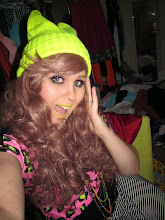My idea is to demonstrate how shapes and color interact on the computer screen. I want to illustrate and animate how shapes affect one another when they collide, disintegrate, orbit, bounce, along with other movements/reactions. I also want to explore color in several ways such as the emotion evoked from a certain color scheme, how colors react differently to be placed against other colors (i.e. do they brighten, dim, "change" the color, etc. to each other), and how restricting colors affects a piece.
I want to explore this idea because it is a challenge for me. I have played with the concept of "changing" a color simply by placing it on top of a different color and it is intensely difficult. I need to explore this concept of using shapes and color because my formal processes are not fine tuned. Simply, I need more experience with it along with my ambition to be able to make color work in my favor, for my purposes. By exploring this topic, I can see myself being able to more effectively create illustrative and animated pieces that use shape and color to push the piece further, to give the piece a more meaning. Choice of color can effect the mood, vibe, and underlying meaning. Choice of shape can effect the way we see a character or item and make complexities within those. I want to control those elements more effectively in my work and I believe this topic will help enhance this for me.
Library sources:
1. Color Codes: Modern Theories of Color in Philosophy, Painting, Architecture, Literature, Music, and Psychology by Charles A. Riley II
2. Concepts and Images: Visual Mathematics by Arthur L. Loeb
3. Art and the Computer by Melvin L. Prueitt
4. Color by Editors of Time-Life Books
5. Mathematics by David Bergamini
6. Color by ed. Helen Varley
Internet sources:
http://www.colormatters.com/comput.html
http://www.tigercolor.com/color-lab/color-theory/color-theory-intro.htm
http://www.cs.brown.edu/courses/cs092/VA10/HTML/start.html
http://viz.aset.psu.edu/gho/sem_notes/color_2d/index.html
http://www.pdf-word.net/science-computer/color-theory-on-the-computer.html
http://mathworld.wolfram.com/Polygon.html
http://www.kirupa.com/developer/actionscript/shape_camera.htm
Outline:
I. Color & Shape
A. color
i. effects
a. vision
b. mood
c. vibe
d. meaning
ii. exploring
a. colors "changing" one another by being overlayed
b. color schemes
c. restricting colors
d. transparencies
B. shape
i. effects
a. assumptions
b. movement
c. physics
ii. exploring
a. movement
b. reactions
iii. types of movement/reactions
a. orbit
b. bounce
c. jump
d. knock over/off
e. smash
f. disintegrate
g. fuzz
h. toss
Wednesday, September 2, 2009
Subscribe to:
Post Comments (Atom)

I think picking a topic like this takes a lot of courage. Color theory, while fun and interesting, can be extremely complicated. I took Remy's color studies class and it sort of drove me crazy trying to complete some of the assignments. I'm really interested to see this idea transpire. Your options are virtually unlimited and you could do some really complex studies of color and shape. I think it is smart that you are picking shapes to represent the colors so that the focus is really drawn to the color and not a complex narrative.
ReplyDeleteI feel your concept will have to deal heavily with composition so that it just doesn't look like "color tests" for each project. Pushing the idea of how colored is seen on computer monitors is a nice idea and I think that you should look at Josef Albers and the essays of Donald Judd. Also there is a program called Genopal at http://genopal.com/ which allows you to grab swatches and make wonderful palettes from images. The program allows for infinite amounts of possibilites.
ReplyDelete